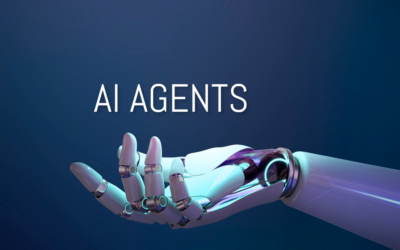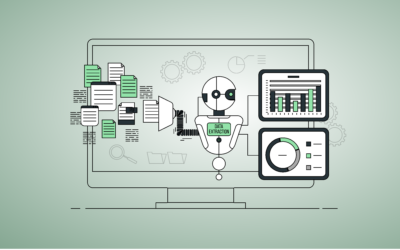Table of Content
Organizations planning to design and implement generative AI applications must consider the concepts and processes involved in pre-training large language models (LLMs). This article aims to highlight essential aspects of pre-training, which are crucial for creating intelligent transformations in business operations. Pre-training a large language model involves training a transformer neural network on a vast corpus of data using supervised learning. The initial version of the model, known as the base model, can predict the next token in a sequence given an input prompt. This base model can be further fine-tuned for specific tasks or aligned with human preferences.
Typically, training a model from scratch is more expensive than fine-tuning. However, many applications require a deep understanding of specific contexts or detailed knowledge, which pre-training on a vast and relevant dataset can provide, ensuring the model acquires the necessary knowledge and context. If no existing model adequately meets the task’s requirements, pre-training a new model from scratch or continuing pre-training on an existing model with new data may be necessary.
Organizations that aim to push the boundaries of AI capabilities or seek a competitive advantage may invest in pre-training models to develop cutting-edge solutions tailored to their unique needs.
Model Architecture
The model architecture or structural design of a large language model (LLM) typically includes key components such as:
- Embedding Layer: Converts input text into vector representations.
- Decoder Layers: Multiple layers that process these vector representations to predict the next token.
- Output Layer: Predicts the most probable next token from the vocabulary.
Choosing the appropriate model architecture involves determining the number of layers, the size of each layer, and other hyperparameters, which are essential for optimizing the model’s performance based on the available computational resources and the specific requirements of the task at hand.
Data Preparation
Once the model architecture is chosen, the next step is data preparation. This involves gathering a large and diverse dataset from various sources such as the internet, repositories, and organizational documents. The data must be unstructured (unlabeled) and cover various topics.
Ensuring the quality of the data is crucial. This is done by removing duplicates (deduplication), filtering out irrelevant or low-quality content, and addressing toxic language or biases. High-quality data preparation is vital as issues with the data can bias the model towards particular patterns and increase training time without improving performance. Deduplication, filtering for language and length, and removing personally identifiable information (PII) are critical steps.
Tokenization
After cleaning the data, it is tokenized, converting the text into numerical tokens that the model can process. This involves segmenting text into smaller units (tokens) and mapping them to numerical values. The data is then packed and structured into continuous sequences of tokens to optimize the training process.
Concatenation is an important part of this process, where multiple input data sequences are combined into one continuous sequence. This helps create batches of uniform length, which enhances the efficiency of the model training. The training process becomes more effective and streamlined by concatenating the input IDs into a single, large sequence and then partitioning this into smaller sequences of the maximum length the model can handle.
It is crucial to use a tokenizer that is specifically designed or associated with the model you are using. Using the appropriate tokenizer ensures compatibility and optimal performance, as the tokenizer is tailored to understand and process the text data in a way that aligns with the model’s architecture and training requirements. Tokenizing is a crucial step in data preparation for pre-training large language models (LLMs), as it transforms the raw text into a format that the model can understand and learn from during the training process. The goal is to represent the text in a structured way that preserves the meaning and context, allowing the model to learn language patterns and relationships effectively.
Model Initialization
Model initialization follows data preparation. It sets the initial values of the weights in a neural network before the training begins.
Random Initialization
The simplest method is to initialize the model with random weights, but this requires extensive data and computational resources for training. Weights are assigned random values, usually drawn from a specific distribution.
This method is straightforward and ensures that the initial weights do not have any specific pattern, which helps break symmetry and allows the network to learn diverse features.
Starting with random weights can shorten the training process and require more data, as the model needs to learn from scratch.
Pre-trained Initialization
A more efficient method is using pre-trained weights from an existing model, significantly reducing the data and time required for further training. With this method, the model starts with weights that encode useful information from an existing pre-trained model.
It is particularly useful when fine-tuning a model for a specific task or continuing pre-training on new data, as the model starts with a solid foundation and requires fewer resources to achieve good performance.
Model Scaling
Training methods involve fine-tuning and pre-training. Fine-tuning a pre-trained model on a smaller, task-specific dataset is less resource-intensive than pre-training from scratch, which demands extensive computational resources and a large dataset.
Model scaling techniques such as upscaling and downscaling are used to adjust the model size by adding or removing layers.
Upscaling duplicates layers to create a larger model, while downscaling removes layers to create a smaller model. Upscaling, or depth scaling, can be particularly advantageous as it allows training larger models with up to 70% less computing than traditional methods, significantly reducing costs.
Hyperparameters
Training the model involves setting hyperparameters like learning rate, batch size, and other training parameters to optimize performance. Monitoring the training process to ensure the loss decreases over time is crucial, indicating that the model is learning effectively.
Adjustments to parameters may be necessary if the loss does not decrease as expected. Checkpointing during training involves saving intermediate versions of the model, which prevents progress from being lost due to hardware failures or other interruptions.
Model Evaluation
Evaluation is a continuous process during and after training. It helps track its learning progress. Human evaluation is essential, where stakeholders manually check the model’s outputs to ensure they meet the expected quality.
Benchmarking using standardized datasets allows for performance comparison against other models. Regular evaluation helps identify areas for improvement and ensures the model remains aligned with the desired behavior and performance standards. Evaluation methods include checking the loss during training, human evaluation of model outputs, comparing models using online tools, and benchmarking with standardized datasets.
Benchmark datasets like ARC, MMLU, Hellaswek, TruthfulQA, Winograd, and GSM AK measure general abilities such as reasoning, common sense, and mathematical skills. Specialized benchmarks like MTBench, EQBench, and InstaVal assess compositional abilities.
Computational Resources
Practical considerations for pre-training LLMs include the need for significant computational resources, as training these models often involves multiple GPUs and substantial memory. The cost of training can range from a few thousand dollars for smaller models to hundreds of thousands for larger models.
Ensuring high-quality data is crucial for effective training. Investing time in data cleaning and preparation can significantly impact the model’s performance and reduce the risk of biases or inaccuracies. Cost calculators (tools) from platforms such as Hugging Face can help estimate pre-training expenses, allowing for better budget planning and management.
Pre-training is particularly beneficial in scenarios where a high level of domain-specific knowledge is required. For instance, it can be used to create models specialized in legal, healthcare, or e-commerce domains or models proficient in specific languages like Catalan or Spanish.
Key Takeaway
Understanding the pre-training process of LLMs is crucial for making informed decisions and effectively communicating with product development teams. Organizations can navigate the complexities of designing and implementing generative AI applications by considering factors such as model architecture, data preparation, training methods, and evaluation.
When existing models do not meet a task’s specific requirements, pre-training a new model from scratch or continuing pre-training on an existing model with new data may be necessary. Additionally, when data privacy and regulatory compliance are critical, organizations may prefer to pre-train their models on proprietary data to maintain control over the data used.
Krasamo AI Development Services
- AI Strategy
- Implement Flexible Open Source AI
- UI/UX Design of Adaptative Interfaces
- Generative AI Application Development
- Generative AI in IoT Devices
- LLM Training and Fine-tuning
- Retrieval Augmented Generation (RAG)
- Software Testing Services Using LLMs
- Design of AI Infrastructure
- Data Security and Governance
- Ongoing Support and Maintenance
- AI Skills–Team Augmentation












